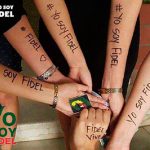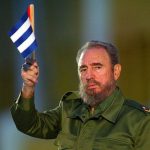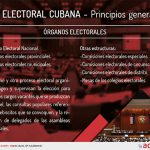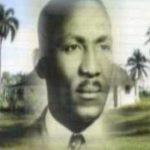The chronology is just another reason for them to be united by history, so similar in spirit and conviction. On June 14, 1845, the son of Marcos and Mariana was born in what is now Calle Los Maceos, in Santiago de Cuba, a noble mulatto whom courage would always define.
Just two days after the start of the Ten Years War, Maceo joined, identified with the cause of independence, he was willing to give his life from the first battle.
He rose in military ranks in a short period of time; he fought intensely from the beginning of the war. Throughout the war he established many battles at the head of the Mambisa troops, guided by that quality of leader that he carried in his blood indissolubly mixed with love for the Homeland and the desire for freedom.
On March 15, 1878, in Mangos de Baraguá, when General Arsenio Martínez Campos dared to propose the document in which the end of the war was proposed without fulfilling the main Mambi aspirations that had motivated the beginnings, Maceo gave lessons in revolutionary intransigence, firmly opposing the Zanjón Pact.
The desire for liberation of this man from Santiago seemed indomitable, he always remained on the warpath at the price of life. That is why he organized and led the 1995 War alongside Martí and Gómez, to which he contributed the experience of an admirable military strategist.
Maceo launched himself in the Invasion of the West, from Mangos de Baraguá to Pinar del Río, a feat that made clear the value of Mariana’s son.
His body marked by the scars of war, that of who had participated in around 600 combat actions and approximately 200 of them major combats, was determined to continue until the last minute.
On December 7, 1896, a fatal gunshot ended the life of someone who would always be remembered as the Bronze Titan. There were then 32 years until in Rosario, Argentina, on June 14, 1928, Celia de la Serna and Ernesto Guevara received their first-born, someone who would become a doctor as one of the manifestations of their inexhaustible desire to do well, especially in the shadow of justice.
The young asthmatic traveler, defying the seriousness of the disease that he suffered, went through the region knowing and admiring the situation of the different towns.
In Mexico, he would join the group of Cubans led by Fidel who had concrete plans for the fight on the island, with whom he traveled on the small yacht Granma, which brought 81 more companions to Cuba.
Since his arrival in the national territory, he had to face the most complex battles in complicated terrain. That man with the soul of a doctor and a guerrilla fighter would fight hand in hand with the Cubans, he would develop crucial and successful missions such as the capture of Santa Clara, and once the Revolution triumphed, he would once again extend his arms in the service of the Cuban people as a leader.
He was then President of the National Bank of Cuba, and Minister of Industries of the revolutionary government, attached to the highest moral commitment.
He left the island to continue winning in the name of the freedom of the oppressed peoples; he did so in the Congo and Bolivia, where cowardly men ended the existence of an exceptional and unrepeatable being, an impeccable example, a courageous and sacrificial internationalist, who was a danger to the imperialists.
Then the stories converge, the ideals merge and it is easy to see similarities beyond the date of birth, Maceo and Che represent the most worthy of our struggles to be the free people of today, the true sense of firmness lies in them and the unwavering will to win that accompanies us.





